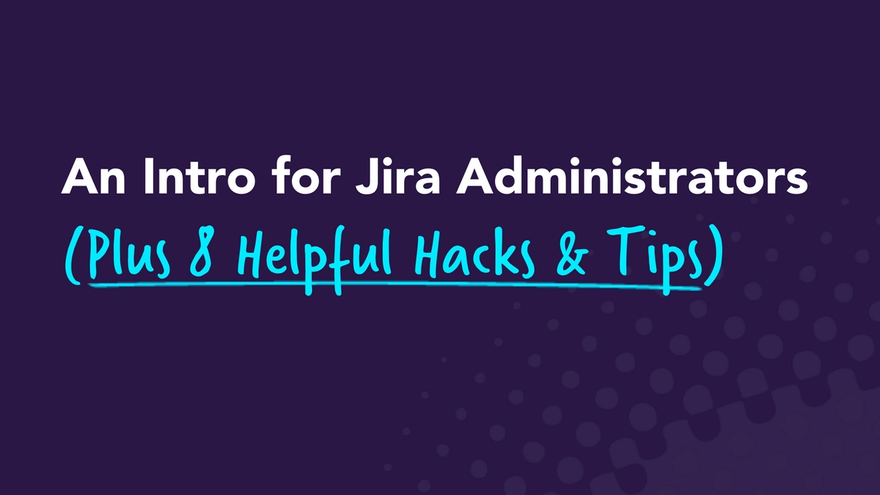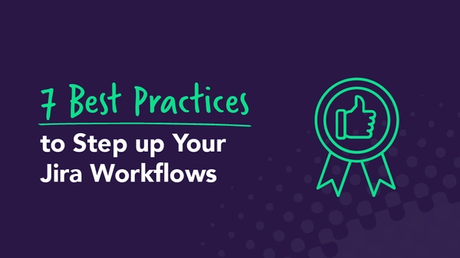Jira
7 min read
An Intro for Jira Administrators (Plus 8 Helpful Hacks and Tips)
Mon Nov 08 2021
Curious about what it takes to become a Jira administrator? Want to become one yourself? Or maybe you already are a Jira admin, but you’re constantly striving to learn more about your field. Either way, you’ve come to the right place!
Jira, an Atlassian product, is one of (if not the) most well-known agile tools for software developers. So, a Jira administrator is in charge of configuring Jira to make sure it’s ready for the team and up to standards at all times. They manage settings, set up Jira projects, introduce key third-party tools, and more. It‘s a huge and invaluable role on the team and a sought-after position amongst many developers.
In this post, we’ll discuss what it takes to land a Jira administrator job and share eight tips for becoming a better Jira admin. Let’s dive in!
What does it take to become a Jira administrator?
The job description for a Jira administrator includes tasks surrounding Jira setup, maintenance, issues, system upgrades, new projects, new releases, and general care. Jira admins also ensure the Jira dashboard and any customizations are designed around specific team needs and that everyone who needs access to a project has proper permissions. If an upgrade is made or a new project needs to be shared, it’s the Jira admin’s responsibility to make sure the team (Jira users) has the right access and resources.
A bachelor’s degree in computer science or a related field is often required for a job as a Jira administrator, but some positions may require a master's degree. Either way, a Jira administrator should have years of experience working with and understanding agile methodologies and years of experience working in computer science, such as programming, product development, software engineering, etc.
Strong communication skills are also an asset since Jira administrators need to frequently interact and communicate with their team to understand how to make the Jira platform work best for them.
A Jira administrator needs to be well-versed in Jira, and they need to continually keep up with current technology and advancements. If you want to pursue a full-time career as a Jira administrator, there are many free Jira tutorials for various levels of experience that can help you gain confidence with Jira.
➡️ The Best Jira Tutorials, Training, and Certifications
To truly become an Atlassian Certified Professional, you first need to get certified. The certification is globally recognized, and you can complete it online. To illustrate your proficiency across Atlassian solutions, you can become an Atlassian Certified Master (ACM), which requires a collection of certifications.
Tips and hacks for Jira administrators
Ready to become a Jira Jedi Master? Whether you’re new to Jira or a long-time professional, when it comes to agile, there's always room to learn and grow. Use our Jira admin tips to fine-tune your processes and improve your admin skills.
1. Make it your own, but don’t over-customize ✂️
Jira software is extremely customizable, which can be both a blessing and a curse. You can adapt the functionality to meet your business needs and truly make it your own. The platform enables you to customize the software as needed and continue to make it work for your team as you learn and grow together.
At the same time, all of these customization options can be a lot to take in, especially if you are new to Jira administration. It can be an overwhelming experience, which is why it’s best to start out simple and learn as you go.
Make it your own, but don’t overcomplicate it with too many custom fields. You don't need to start from scratch. Reuse as much as you can to save yourself time and simplify your workload. For example, instead of creating a new field every time, begin with a general use field if the new field will only be used once.
2. Write clear and concise descriptions 📝
The success of your Jira usage depends on writing clear and concise descriptions. Make sure your issue summary and description fields are all clear and only include relevant information — nothing more. Everyone on your team (and your future self) should be able to understand why a Jira instance was created and what it entails.
3. Utilize keywords to simplify searches 🔦
Keywords are simple and effective. Include them in all of your descriptions to help you find exactly what you need. Once again, this comes back to creating clear descriptions. Adding searchable keywords as you create issues will make your life a whole lot easier when you need to find something.
4. Do regular maintenance 🔧
Set a specific time each week to do regular maintenance in Jira. Ensure descriptions are accurate and up-to-date, look for duplicate issues, and add clarity where it’s needed.
It’s best to set a specific time for this every week. Otherwise, it will be a task you put off in favor of more time-sensitive tasks. If you aren’t doing this kind of regular maintenance, ensure your Scrum Master or project manager is.
5. Bookmark important screens 📖
Bookmarking important screens only takes a few minutes, and it will save you time every day, freeing you up for more important tasks. Encourage your team members to do the same so that critical pages, resources, and boards are only one or two clicks away.
6. Automate repetitive processes 🔄
Use automation to save time and streamline processes. Jira offers advanced automation capabilities for recurring activities. You can schedule milestones, auto-assign issues, automatically tidy boards, and much more. For example, automation can resolve a parent issue when the last sub-task is resolved so that you and your team have less maintenance later on.
7. Don’t forget about shortcuts 💻
Shortcuts are your friend — and Jira has tons of them! Shortcuts are designed to save you time on common functions, such as searching, creating issues, editing issues, sharing, commenting, and toggling between issues.
Some common shortcuts include:
- / for quick search
- ? to view keyboard shortcuts
- c to create an issue (the last created issue is the default issue type)
- e to edit any issues
- a to assign an issue
- s to share an issue
- j to jump to the next issue
- k to jump to the previous issue
- z to hide or show menus
Simply press “?” at any time in Jira to bring up all of the available shortcuts. Continue to check this list as you learn and memorize more and more shortcut keys.
8. Find helpful plugins in the Atlassian Marketplace 🛍
The Atlassian Marketplace is filled with helpful plugins that can add to your abilities as a Jira system administrator. Take advantage of add-ons to improve efficiency, data collection, troubleshooting, and how you map the customer journey.
There are all sorts of Atlassian tools at your fingertips that include reviews and noted “Staff Picks,” so you know which popular software development and project management tools have been used and loved by other teams and businesses.
Easy Agile Staff Picks ⬇️
Let’s review those tips one more time:
1. Make it your own, but don’t over-customize.
2. Write clear and concise descriptions.
3. Utilize keywords to simplify searches.
4. Complete regular maintenance.
5. Bookmark important screens.
6. Automate repetitive processes.
7. Don’t forget about shortcuts.
8. Find helpful plugins in the Atlassian Marketplace.
Jira admin made easy
If you are truly interested in pursuing a career as a Jira admin, we recommend gaining real-world experience, seeking out Atlassian-approved training, and becoming certified. It may be a challenging career, but it’s a rewarding one. As a Jira administrator, you’ll always be adapting and acquiring new skills for life-long learning.
Easy Agile is dedicated to helping teams work more efficiently and effectively in Jira. We design products that work directly with Jira software to enhance your abilities as a Jira admin.
Easy Agile TeamRhythm can help you and your team collaborate on and prioritize the work that will deliver the most value to your stakeholders and end users. Access a free trial for 30 days.
If you have questions or want to learn more, book some time to chat with our team to learn about our agile apps for Jira.


